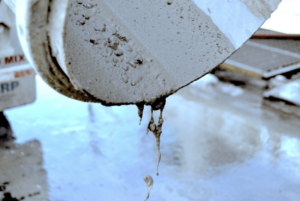
Self-Consolidating Concrete — Made Possible by Polycarboxylate-Comb Polymer type High Range Water Reducers
Abstract
A Polycarboxylate-comb polymer is used in the concrete industry as a water reducer for concrete mixture design. The PCP deflocculates aggregates of cement particles that entrap water. This aggregation reduces concrete fluidity in the fresh state and strengthens in the hardened state. Polycarboxylate comb polymers are used in the concrete industry to deflocculate these aggregates of cement and water. The deflocculation function of the polycarboxylate comb polymers is dependent on the polycarboxylate comb polymer’s structure and soluble alkali content of the Portland cement. Current polycarboxylate comb polymer technology requires different polycarboxylate comb polymer backbone and graft dimensions must be constructed based on cement soluble alkali content. It was originally proposed by the author that: a Smart Macromonomer could be created that polymerizes in the cementitious and water solution, based on soluble alkali content, during the concrete mixing process. This new type of polycarboxylate comb polymer could be used throughout a broad spectrum of cement reducing the need for cement-specific polymer construction. Unfortunately, the technology for polymerization of the proposed Smart Macromonomer to polymerize in the liquid concrete environment could not be identified. In lieu of the original proposal, a secondary proposal is offered that takes advantage of a gradation of polycarboxylate sizes and structures in order to create a new polymer composite solution. This solution would facilitate enhanced workability for all types of cement.
Introduction
Concrete has taken its place in the construction of civilizations throughout time. The Egyptians took advantage of its structural properties in 2,500 BC to build the Pyramids of Giza, one of the only remaining seven (7) wonders of the world. The Romans perfected the concrete mixture to construct structures such as the Pantheon and the Appian Way, both of which are still in use today. And the British tried to rediscover the Roman concrete mixtures that were lost during the early Middle Ages [8]. By the 1910s and 1920s concrete had regained some of its lost lusters with the culmination of Duff Abram’s Laws of 1918 and 1919 [9]. The development of these laws shown in Equations (Eq) 1 and Eq 2 exemplified the dependence of concrete strength on the amount of water. Abram had unknowingly brought concrete technology continued to advance into the molecular realm. Some 70 years later Japanese research in 1990 welcomed one of the greatest breakthroughs in the concrete industry, the polycarboxylate comb polymer (PCP). With all of its history and the depth of change that this composite material has gone through, concrete has become one of the most versatile construction materials in the world. Thanks to emerging technologies, such as the PCP, Architects and Engineers alike have started using concrete over more traditional materials for both structural and aesthetical applications.
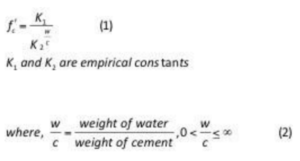
In the early 1980s Japanese research, pioneered by Nippon Shokubia, developed what is today referred to in the concrete industry as the superplasticizer. The superplasticizer is a liquid admixture that is primarily compromised of a 30 to 60% solid solution. The solids in a superplasticizer solution are primarily comprised of PCPs. The PCP is used throughout the concrete industry to reduce the water demand by 10 to 30% while maintaining fluid properties. These fluid properties give concrete the ability to consolidate under its own weight due to the force of gravity also known as self-consolidating properties. Contractors take advantage of this self-consolidating nature when the mechanical means of consolidation are inadequate or space for equipment is limited. By reducing the concrete design water by 10–30% PCPs also have the added secondary benefit of increasing concrete strengths. Current PCPs used by Winnerfeld, et al in their work on PCP microstructure, are constructed from raw materials such as methyl (acrylic) acid for the backbone and methylpolyethyleneglycole-methacrylate for the graft (or teeth) [3]. Other chemical engineers such as Darwin, et al have used similar raw materials to perfect the polymerization process of PCPs detailed in US Patent 5,725,657 [1]. In his US Patent, Darwin stipulates that the environment that sustains the free radical polymerization (grafts) and co-polymerization (extension of the backbone) process to build the backbone and grafted section of the Smart Macromonomer must be kept in a slightly basic solution a pH of 9. The temperature of the said environment can range from 60 degrees Celsius © to 125 C for approximately 60 minutes. The temperature can be decreased with the use of a catalyst. The ambient environment to initiate polymerization will be referred to later on in the proposal section of the report.
The problem with current PCP technology is that it is dependent on cement chemistry. Drastic changes in cement chemistry require a new PCP structure to induce the desired effects. By re-organizing the backbone length and graft length and density, the fluid properties of concrete can be maximized based on cement chemistry. The purpose of this paper is to consider the development of a Smart Macromonomer and the development of a Polymer Composite Solution which enhances the fluid properties of the concrete composite.
Cement Hydration
The purpose of this section is to introduce cement hydration and the problems encountered when mixing cement and water. In Figure 1a, the cement particles (CP) have been mixed with water. As soon as the CP and water mix, the hydration process begins. Figure 7 illustrates the five (5) stages of the cement hydration process. The suspended CPs have a residual charge that can be positive or negative. The alkalinity of the cement and water solution creates a basic environment with a pH of 12. The heat generated by the cement hydration process can start as low as 0 C and increase as high as 90 C as demonstrated in Joseph Stephen’s book that documents the building of the Hoover Dam [12]. The hydrating environment of the concrete composite differs significantly from PCPs polymerization environment.

Figure 1a — Electrostatic charges between unlike charges of adjacent CPs can lead to flocculation.
Furthermore, unlike charges on the CPs develop electrostatic forces based on the proximity of adjacent CPs. Figure 1b exemplifies the change in energy based on CP distance [5]. These electrostatic forces cause the CPs to flocculate in solution. The flocculation can lead to the development of aggregates of CPs entrapping water [11]. This flocculation causes a dramatic reduction in workability (slump) and hydrated products. This phenomenon is illustrated in Figure 2. An inadequate but inexpensive solution to this aggregation phenomenon, and still used in the current concrete, is to increase the amount of design water during mixing. By increasing the amount of water the workability of the mixture is increased. A side-effect of this increase in water is an increase of porosity from drying and therefore a drastic reduction in concrete strength. The dynamics of this reduction in concrete strength are modeled in Eq 1 and Eq 2.
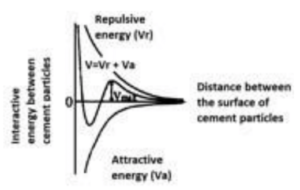
Figure 1b — Relationship between distance and interactive energy of cement particles (REDRAWN — Uchikawa 1996).
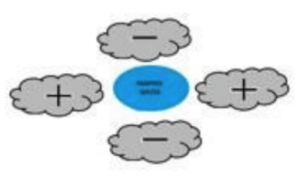
Figure 2 — Aggregates of cement and trapped water reduce the workability of the concrete mixture.
PCP: Structure, Absorption, Initiation, and Termination
The purpose of this section is to identify the PCP structure and its a progression in the cement hydration process. The PCP acts as a deflocculant. The PCP, illustrated in Figure 3, is made up of a molecularly polymerized backbone with co-polymerized grafts embedded on the base of the backbone. The grafts act as the teeth of the PCP combed structure [11]. The grafts or teeth act as the deflocculating site as illustrated in Figure 4. The process of deflocculation or steric repulsion is to be discussed in later sections.
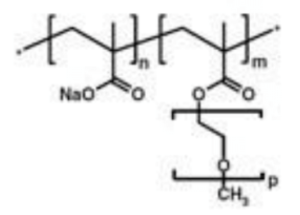
Figure 3 — Chemical structure of the experimental PCP (copolymers of methylpolyethyleneglycole-methacrylate and methacrylic acid, sodium salts) — (REDRAWN from Winnerfeld 2007).
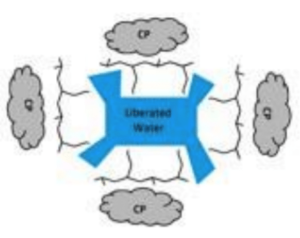
Figure 4 — A PCP absorbed onto the surface of the CP causing deflocculation of aggregates and liberation of the trapped water for cement hydration.
The PCP is mixed into the concrete while the concrete is still in a fresh or plastic state. The PCP is normally added to the concrete mixture at the end of the mixing cycle. The PCP is more apt to universally dissolve onto the surface of CPs when a large majority of the water has been discharged into the mixture saturating the CPs. Figure 4 gives a “big picture” concept of how the PCP mitigates flocculation in the cement water solution. The absorption of the PCP to the CP surface is based on two (2) specific methods of operation.
The first mechanism at the CP surface is found at the base of the backbone as illustrated in Figure 5a. Figure 5a documents the chemical incorporation of the backbone at the base of the PCP onto the CP surface during the mixing phase (STAGE 1) of the cement hydration process. Uchikawa et al quantified and determined a change in electrostatic forces associated with PCP adsorption, through the use of cement pastes examined using Zeta Potential [5]. Figure 5b highlights the interfacial electric double layer formed on the CP and absorbing organic admixture that is used in the zeta potential measurement. In Figure 1c the CP suspended in water has the PCP adsorbed to the surface. At the surface of the CP, in the stern layer is a combination of the ions from the hydrated products and organic components of the PCP. Outside of the stern layer is an electric diffuse double layer in which the concentration of ions decreases with increasing distance from the CP surface. Finally, a slipping surface (zeta potential) exists between the CP particles and the water. This slipping surface is the measured value that quantifies the adsorption of the PCP to the CP surface. The Zeta Potential signal is generated from ions that have an opposite charge at the Stern Layer. Uchikawa showed through experimentation that the Zeta Potential of a bare CP in solution is higher than the signal measured from the CP that has adsorbed the PCP. The change in PCP structure and thus zeta potential was compared to the change in viscous properties of fresh mortar. The culmination of Uchikawa’s work surmised that as adsorption of PCP to CP increased, the zeta potential of the CP decreased and the measured flow of fresh mortar increased.
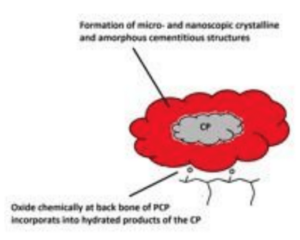
Figure 5a — The first mechanism of PCP absorption onto CP.
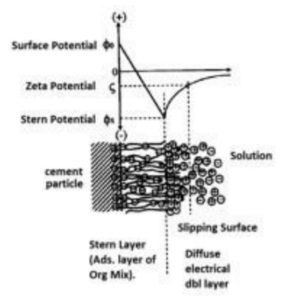
Figure 5b — Schematic explanation of interfacial electric double layer formed on the cement particle absorbing organic admixture (Uchikawa 1996).
The second mechanism, shown in Figure 6, is based on the soluble alkali content of the cement solution. Soluble alkalis in the form of sulfates (SO42-), calcium (Ca2+), potassium (K+), and sodium (Na+) are present in the solution as part of the cement hydration of the CP and water. The soluble alkalis (namely, SO42- and Ca2+) compete at the CP surface for PCP absorption. The soluble alkali content dictates the type of PCP to reach target workability or fluidity. The soluble alkali protects the PCP from being overcome by hydrates by creating a gap between the CP surface and the backbone of the polymer during hydration. As the cement hydration process continues there is the retardation of structure growth due to the transition from the mixing phase (Stage 1) into the dormancy phase of the cement hydration process (Stage 2) as illustrated in Figure 7 [9]. During this stage, where the PCP that is absorbed into the CP cannot affect the fluidity, the PCPs which were originally protected by the soluble alkalis are available to extend the slump life of the concrete. As the hydrated products grow, the PCPs that were originally extended over the surface have now adsorbed the surface of hydrated products (Figure 5a) and contribute to the steric effect. The following two (2) scenarios are used to examine the soluble alkali contents and the PCP response. It is assumed that the backbone length m and tooth density of n of the PCP will be the same for both scenarios.
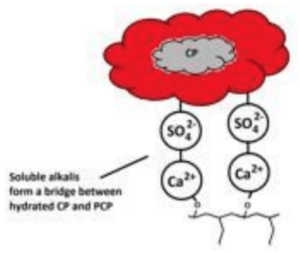
Figure 6 — The second mechanism of PCP absorption onto CP.
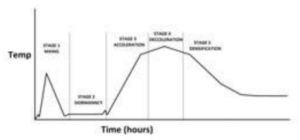
Figure 7 — The five (5) stages of the cement hydration process.
For high soluble alkali content the effectiveness of the PCP to adsorb to the CP surface and initiate immediate deflocculation will be below. The PCP which adsorbs to CP surface chemically initiates, deflocculating the CPs as shown in Figure 5. After a change in time, the PCP on the CP surface is engulfed by hydrated microscopic and nanoscopic structures; rendering the PCP useless [7]. This causes a drastic reduction in workability. Due to the high soluble alkali content (low efficiency of immediate adsorption), some of the PCPs are left unreacted and extended over the hydrating surface of the CP illustrated in Figure 6. Therefore, a high soluble alkali content may require a higher dosage of PCP (compared to a low alkali content) to reach deflocculating properties. But as the hydration process proceeds, there will be an availability of PCP to extend the slump retention.
Conversely low soluble alkali content will offer less protection to the PCP from the hydrating CP. Therefore, a higher portion of the dosed PCP will adsorb to the CP surface. A lower dosage of the PCP will be required to initiate immediate fluid properties. Due to the greater population of PCPs adsorbing to the CP surface, there will be lower availability of PCP for slump retention after cement hydration has proceeded in the dormant phase (Stage 2) of the hydration process. Therefore, the slump retention of this (low soluble alkali content) concrete mixture will be reduced significantly.
PCP: Method of Operation, Construction, and Problems
The method of operation of adjacent and initiated PCPs on opposing CP surfaces is referred to as steric repulsion. The like charges on the grafts of the adjacent PCPs repel each other. The PCP which is absorbed to the surface of the CP transfers repulsive energy felt by the steric repulsion causing the affected CP to continuously displace from other PCP-coated CPs. Figure 8 documents experimentation by Uchikawa’s group, in this study interactive forces between CP surface, adsorbed with pure water, and PCPs are measured. This specific molecular motion of particles, steric repulsion, causes deflocculation. The efficiency of the steric effect is dependent on the adsorption of the PCP onto the CP particle surface [7]. The adsorbed PCP on the CP surface transfers the repulsive energy from the steric effect (of adjacent CPs) to the CP causing deflocculation. Early on during the cement hydration, the PCP that directly adsorbs to the CP surface will be the active contributor to the steric effect. The PCPs that are extended over the CP surface does not contribute to the steric effect. Once the products of the cement hydration grow to a certain height where the PCP is adsorbed, then it participates in steric repulsion.
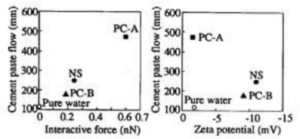
Figure 8 — Examination of Interactive Forces and Zeta Potential of 2 Different PCPs interactive with 1 type of Cement.
As shown by Winnerfeld, et al in their work on PCP structure and concrete properties, PCP adsorption is dependent on the charge density of the PCP and cement solution. The charge density of the cement solution is dependent on the soluble alkali content. The higher the soluble alkali content, the higher the charge density [10]. The rate of adsorption of PCP to CP increases as charge density increases. Winnerfeld, et al found that as they decreased the length of the backbone and increased the density of grafts (teeth), the charge density increased. Therefore, the shorter the backbone and the higher the population of grafts on a given chain, the higher the charge density and the better the adsorption of the PCP to the CP surface. It was also determined by Winnerfeld, et al that macromonomers like Figure 3, of the form methyl (acrylic) backbones, m, and grafts of PEG-alkyls, n must have a distribution greater than 1:2 to adsorb to the CP surface [3]. These two (2) phenomena will be applied in later sections. As stated previously, current PCP technology is dependent on soluble alkali content. The following two (2) scenarios are used to illustrate how a change in soluble alkali content of a CP requires the design of a new PCP structure.
For high soluble alkali cement, a high volume of PCPs is extended over the CP surface. The PCPs cannot extend the steric effect for deflocculation until the PCP adsorbs onto the hydrated. Due to the high volume of PCPs extended over the surface, slump retention is extended. If a PCP solution is comprised of long chains, there is a tendency for a PCP overdosage. The solution to conditions that overextends the slump diameter and life, would be to design a solution with a high volume of short-chain PCPs so that there is an ample amount PCPs that can be extended over the surface and adsorb to the CP surface ensuring that oversaturation would be avoided.
For low soluble alkali content, a low volume of PCPs is extended over the CP surface. A high volume of PCPs is adsorbed onto the CP surface. A low dosage is needed to initiate good workability. Due to this low dosage, slump retention does not last long as the PCPs are engulfed by the hydrating CP. A solution to the absence of slump retention would be to have a high volume of long-chain PCPs to ensure that there are PCPs extended over the CP surface capable of offering an adequate steric effect for deflocculation to ensure slump life. Based on the obstacles high-lighted, a new PCP design is proposed that would polymerize in the concrete mixture.
Concept 1
It is proposed by the author that the development and the use of a Smart Macromonomer employs the type and amount of soluble alkalis as a means to polymerize into a Smart PCP. Figure 9a illustrates a rudimentary rendering of the proposed Smart Macromonomer. The Smart Macromonomer would construct into longer polymer chains within the cement matrix of the concrete composite during the concrete mixing process. From the schematic in Figure 9a, the end groups of the Smart Macromonomer would be constructed in the same method as described in previous sections about PCP polymerization. During the free radical copolymerization process, functional groups such as carboxylic acids would be attached to the adjacent ends of the Smart Macromonomer backbone.

Figure 9a — Original Proposed Smart Macromonomer design.
When discharged into a concrete mixing basin the Smart Macromonomer, in Figure 9a could act as a stand-alone PCP (m:n to be 2:3); adsorbing to the CP surface in order to generate the deflocculation and the initial viscous state [3]. Once dispersion is commenced, it is hypothesized that the carboxylic end groups would functionalize, initiating polymerization within the cement paste matrix of the concrete composite. The functionalization would be initiated by the soluble alkalis in said cement paste. As discussed in previous sections, the chain length of the polymerizing Smart Macromonomers would be dependent on the charge density of the host solution.
A cement paste, with high soluble alkali content, has a lower pH, will generate a high positive charge density in the host solution. The backbone lengths in a localized area would construct to finite lengths in-order to generate their own negative charge density that is proportional to that of the positively charged solution. It is submitted that the polymerization in a localized area will approach termination due to the neutralization of the charge density of the local cement paste solution.
Where current PCP technology is sensitive to soluble alkali content, the Smart PCP would use the soluble alkalis to polymerize as illustrated in Figure 9b. The Smart PCPs would both adsorb to the CP surface for steric repulsion and extend over the surface (similar to standard PCPs) through the soluble alkalis. This new type of Smart PCP could be used throughout a broad spectrum of cement reducing the need for cement-specific polymer construction.
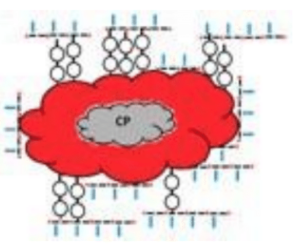
i) Shows a Low Soluble Alkali Content, the long PCP chains reflect the low charge density of the alkali solution.
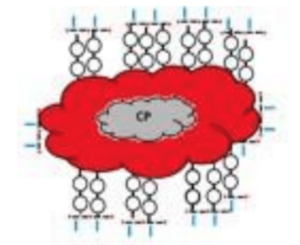
ii) Shows a High Soluble Alkali Content, short PCP chains reflect the high charge density of the alkali solution.
Figure 9b — Two Examples of Polymerization of Smart Macromonomer into Smart PCP.
Unfortunately, through an exhaustive literature review and interviewing two (2) seasoned polymer chemists it was determined that the end group technology required to initiate polymerization of the Smart Macromonomer in the cement paste environment has not been discovered or published. The end group, as well as polymerization within the cement paste, is the distinct feature of this proposal. As demonstrated in previous sections, the cementitious environment differs greatly from that of current PCP polymerization techniques. A second proposal is offered that could be used to enhance the properties of concrete composites through PCP manipulation combined with optimization techniques.
Concept 2
The second proposal offered identifies the possibility of combining packing density concepts used in concrete optimization systems to a system of different PCPs suspended in solution. Similar concepts were used during the author’s Master’s Thesis on the use of Nano Silica in the Cement Hydration Process.
The gradation concept is as follows. Assuming a given volume, if a certain structure with some arbitrary geometry and known density is populated into the volume; the porosity index of a filled volume could be determined. By including larger and smaller sizes of the same arbitrary geometry shape (and some different shapes) the porosity can be reduced. The combination of sizes that results in the lowest porosity index and mass per volume would maximize the amount of surface area and nucleation sites for the combination of arbitrary shapes. This concept is applied to the PCP concept in this second proposal.
The structure of the PCPs would be divided into a wide gradation of backbone length and graft densities. An experimentation model could be combined with the same PCP microstructure synthesis and experimentation conducted by Winnerfeld’s group. Through the Doehlert model, the maximum and minimum values of three parameters would be prescribed for backbone length, graft density, and graft length. Based on these extrema, thirteen gradations would be calculated through the model for experimentation. The thirteen PCP gradations would be combined in mortar mixtures and tested to determine the most efficient combination of raw materials, and the structure of said materials, to yield the best fluid properties for the longest time. This same model would be repeated with low, moderate, and high soluble alkali cement.
It is hypothesized that the optimal gradation of PCPs will correspond to the widest gradation of lengths and densities. The greater availability of different PCP molecular structures during the cement hydration process, the faster the steric repulsive forces will initiate deflocculation and the longer the slump life will last. In order to facilitate a rheological environment conducive to universal mixing, it is necessary to include in the solution an ample amount of long and short-chain PCP. The wide birth of long and short-chain PCPs is used to ensure the possibility of the PCP dispersion being dispersed into a high, moderate, or low soluble alkali CP surface without oversaturating the system with one size.
Conclusion
The purpose of this report was to introduce the use of a specific type of polymer science in the most popular construction material, concrete. PCPs are chemical additives that offer the concrete user a means to decrease the water content (thus increasing cured strength) while increasing the workability of concrete while in the fresh state. Currently, PCP requires constant modification due to the ever-changing soluble alkali contents in cement. The first proposal of this project specified the design and use of a Smart Macromonomer that would polymerize in the cement matrix into a Smart PCP. The Smart Macromonomer would effectively become a “one size fits all” chemical admixture. It was determined that current technology limited the probability of constructing the proposed Smart Macromonomer. The secondary proposal offers a means of using currently available PCP technology to design a new PCP composite system that could offer a gradation PCP structures to enhance concrete fluid properties. This system would ensure ample steric repulsion sites throughout the cement hydration process without the oversaturation of one structure. Polymer chemistry ushered in a breakthrough in concrete technology.
The future possibilities that polymer science offers to the concrete industry are only limited by the tools in our hands and our imagination’s designs.
Written By: Jon Belkowitz, PhD, PE
REFERENCES
- D. Darwin, E. G. (1998). “Cement Admixture Product.” United States Patent, U. S. P. Office, ed., United States Patent Office, United States, 1–7.
- E. Sakai, A. I., A. Ohta. (2006). “New Trends in the Development of Chemical Admixtures in Japan.” Advanced Concrete Technology, 4, 211–223.
- F. Winnerfeld, S. B., J. Pakusch, T. Gotz. (2007). “Effects of the molecular architecture of comb-shaped superplasticizers on their performance in cementitious systems.” Cement & Concrete Composites, 29, 251–262.
- Gram, A. (2009). “Numerical Modeling of Self-Compacting Concrete Flow.” Division of Structural Design and Bridges, 99, 1–72.
- H. Uchikawa, S. H. a. D. S. (1996). “The role of steric Repulsive Force in the Dispersion of Cement Particles in Fresh Paste Prepared with Organic Admixture.” Cement and Concrete Research, 27, 37–50.
- István, A. (2006). “The evolution of superplasticizer technology New opportunities in the concrete industry.” H-1117.
- J. Plank, K. P., N. Zouaoui, P.R. Andres, C. Schaefer. (2008). “Synthesis and performance of methacrylic ester-based polycarboxylate superplasticizers possessing hydroxy-terminated poly(ethylene glycol) side chains.” Cement and Concrete Research, 38, 1210–1216.
- Moore, D. (1995). The Roman Pantheon: The Triumph of Concrete, University of Guam.
- Neville, A. M. (2005). Properties of Concrete, Prentice-Hall.
- R. Flatt, Y. H. (2001). “A simplified view on chemical effects perturbing the action of superplasticizers.” Cement and Concrete Research, 31, 1169–1176.
- S. Mindess, J. Y., D. Darwin. (2003). Concrete, Prentice-Hall..
- Stephens, J. (1956). Hoover Dam, An American Adventure, University of Oklahoma.

Highly rated post. I study one thing totally new on totally different blogs everyday. Deciding on one . stimulating to learn the paper content from other writers and be taught a little one thing from their website. I’d like to apply sure of this content material on my blog you’re mind. Natually I’ll give a hyperlink right here we are at your web-site. Admire your sharing.
Awesome post.
THANK YOU!
Hi mates, its wonderful article about cultureand completely explained, keep it
up all the time.
THank you!